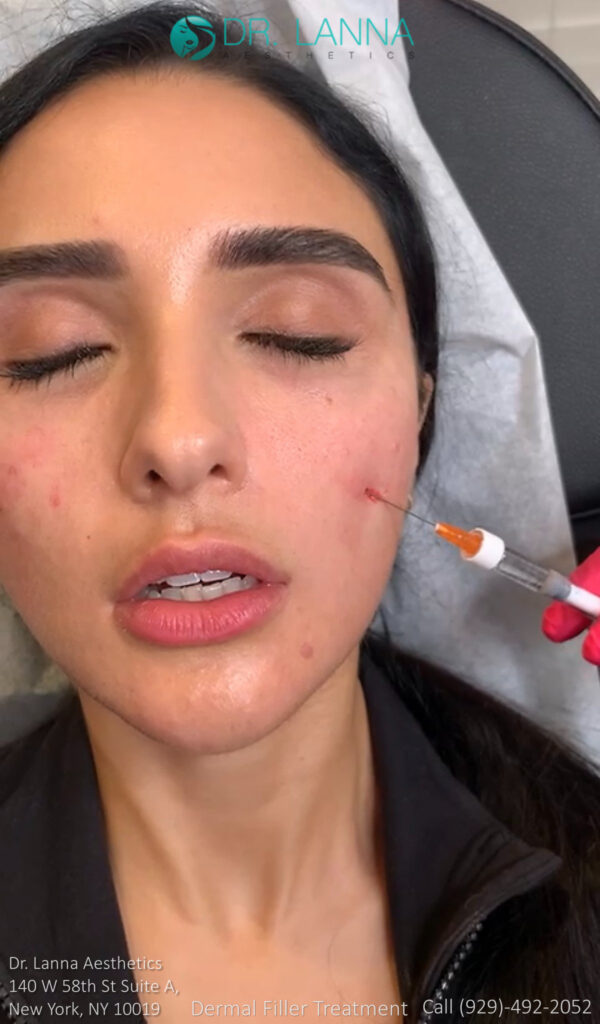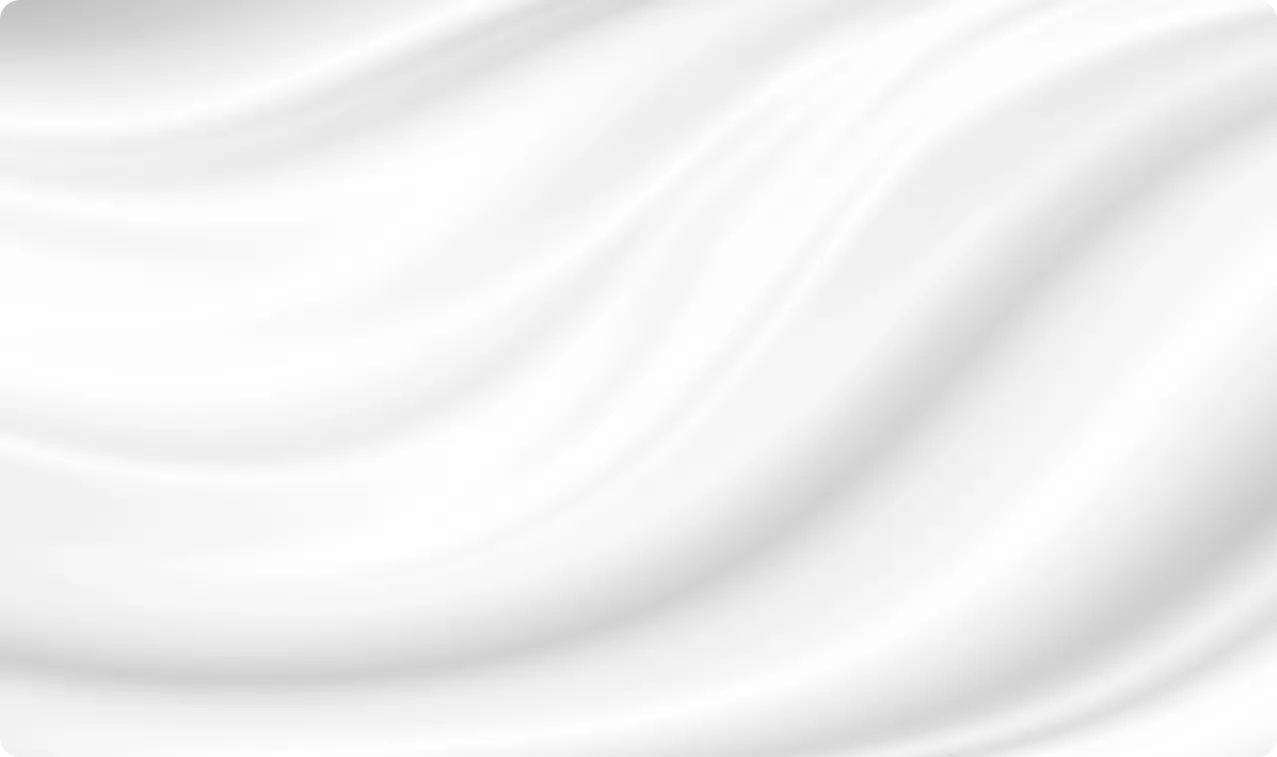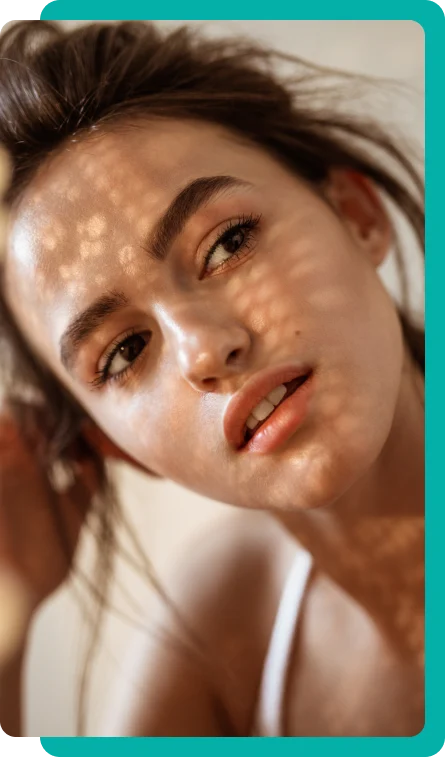Dermal fillers are an excellent way to increase cheek volume and erase wrinkles around the midface region. While it’s safer than facial plastic surgery, it’s still important for patients to take better care of their skin after their dermal filler treatment to avoid side effects and achieve the best results.
So what should patients do after receiving cheek fillers? Applying a cold compress and protecting the skin from sun exposure are important aftercare steps for cheek filler treatments. Patients are also advised to avoid a lot of things and activities that might affect their results, such as intense exercises, facial or massage therapy, makeup, and alcoholic drinks. It’s also important to avoid touching the injection site right after the procedure.
7 Aftercare Tips for Your Cheek Filler Treatment
Dermal filler injections are used for different aesthetic purposes – from lip filler treatments to tear trough filler procedures. According to the yearly report by the ASPS, it’s one of the most popular minimally invasive cosmetic treatments with about 3.4 million procedures performed in the country alone. Among these treatments are thousands of cheek filler appointments that helped patients restore cheek volume, erase fine lines and wrinkles, and improve facial contour.
Many factors affect the success of cheek filler treatment, including how well patients take care of their skin after receiving facial fillers. To help you preserve the results of the injectable filler for longer, here are some of the best aftercare tips to follow:
1. Use Cold Compress to Relieve Pain and Discomfort
Like Botox injections, pain and swelling are also common side effects of cheek filler injections. They usually subside after a few hours or days, but some patients might experience more severe discomfort than others.
If the pain and swelling make it hard for you to go through the day or sleep at night, it’s better to use a cold compress than take certain pain relief medications. Over-the-counter medications like aspirin, ibuprofen, and other blood thinners increase the risk of bleeding or bruising, so ask the doctor about pain medications that are safe to take. Supplements like Vitamin E and fish oil should also be avoided for some time.
When using a cold compress or ice pack, make sure that the ice won’t touch the bare skin in the treatment area. This may result in infection so wrap the ice in a clean cloth before applying it over the painful or swelling areas. Avoid putting too much pressure on the treated areas to avoid the hyaluronic acid filler from spreading to other areas.
2. Avoid Intense Exercise
Strenuous exercises like weightlifting and cardio should also be avoided for the first 24 to 48 hours after the cosmetic treatment to reduce bruising and other possible side effects. These physical activities increase the patient’s heart rate, causing some of the blood vessels on the face to become more visible. This also results in the delayed bruising that occurs after the treatment session, so it’s best to keep the blood pressure down.
3. Don’t Use Makeup for a Few Days
Makeup is another important thing to avoid after Botox or filler injection treatments. These procedures leave tiny pricks on the skin, creating an opening for bacteria to get into the skin and cause infection. Patients need to keep the injection site clean and sterile for the next 6 to 24 hours until the injection sites close.
Other facial tools like Gua Sha stones and jade rollers should also be avoided for some time. These skin care devices increase blood flow in the face, which might increase the patient’s risk of swelling, bruising, or spread of HA filler injections.
4. Reschedule Your Facial or Massage Appointment
Although it’s rare for cheek fillers to spread to other areas around the face, it may still happen if there’s enough consistent pressure applied to the treated areas. Because of this, patients shouldn’t schedule facial treatments or massage therapy within 2 weeks of their cheek filler procedure.
Similarly, patients should also avoid laser treatments (like laser skin resurfacing or laser hair removal) until they’re sure that the fillers have settled under the skin. The heat from the laser cosmetic procedure won’t dissolve the fillers, but the pressure from these treatments might result in the migration of dermal fillers to other areas.
5. Don’t Drink Alcohol
Alcohol is a blood thinner and vasodilator that increases the patient’s risk of swelling and bruising. Whether you’re getting lip injections, cheek filler treatments, or dermal filler injections for the fine line and nasolabial fold near the mouth, then it’s best to avoid alcoholic drinks about 24 hours before and after the dermal filler appointment.
In some cases, dermal filler treatments may also cause patients to feel a bit sleepy or dizzy a few hours after the procedure. Alcohol can worsen these symptoms, affect the body’s reaction to the filler, and slow down the healing time, so it should be avoided altogether.
6. Protect Your Face From the Sun
Sun exposure causes different signs of aging to appear on the skin. It also reduces the effectiveness of dermal fillers injected in the treated areas by degrading the hyaluronic acid in the injectable.
Sun exposure may also irritate the skin and slow down the healing process, so it should be avoided as much as possible. If the patient needs to head out, they should apply sunscreen with high SPF content to protect the treatment area. They should also avoid other sources of UV rays like tanning beds.
7. Avoid Touching the Treated Area
Touching the injection sites with bare hands right after the cheek filler treatment increases your risk of developing an infection. There’s also the risk of applying too much pressure to the treated sites, causing dermal fillers to spread to the nearby tissues and muscles. Make sure that everything you apply to the skin is clean and sterile to avoid complications or side effects.
Common Cheek Filler Side Effects and What to Do About Them
Although cheek filler treatments have fewer side effects than plastic surgery, they still come with risks that patients should be aware of. Here are some of the most common cheek filler side effects and how to manage them:
- Bruising and Swelling – Bruising and swelling typically show within the first few hours after the treatment session and may last for a few days. They don’t affect the result of dermal fillers for cheeks or lips, but patients may find these symptoms uncomfortable. It’s best to use an ice pack or cold compress instead of taking blood-thinning painkillers.
- Headache – Headaches or pain in the treated areas are also common, but they’re usually fleeting. Make sure to only take the type of painkillers prescribed by the doctor because other medications might affect your recovery.
- Redness and Itching – Itching and redness might also occur at the injection site, but it’s crucial to avoid picking on the skin to prevent complications and the risk of infection. Taking Benadryl as instructed by the provider may help relieve some of the uncomfortable symptoms.
- Bumps and Cold Sores – These symptoms are less common than the previous ones, but they might occur in patients who are prone to breakouts and have a history of cold sores. Taking antiviral medicine a few days before the cheek filler treatment helps reduce the risk of having cold sores, but you need to consult with a doctor first.
- Lumps – The appearance of lumps might be alarming, but it’s usually just fluid accumulation or bruising caused by the injection. Lumps usually disappear quickly once enough pressure is put on the treatment area. However, it’s important to let the plastic surgeon or dermatologist massage the area to break up lumps without spreading the filler to other areas of the skin.
Dr. Lanna Aesthetics: The Best Cheek Filler Provider in NYC
At Dr. Lanna Aesthetics, we help our patients restore cheek volume using the best dermal fillers like Juvederm Voluma XC and Restylane Lyft. We always make sure to follow safety codes and guidelines during each procedure to give you the safest and most natural cheek filler treatment.
Our highly-trained experts also offer other wrinkle and acne treatment options, coupled with utmost patient care and the best medical techniques and equipment. Call us today to know more about our services.



